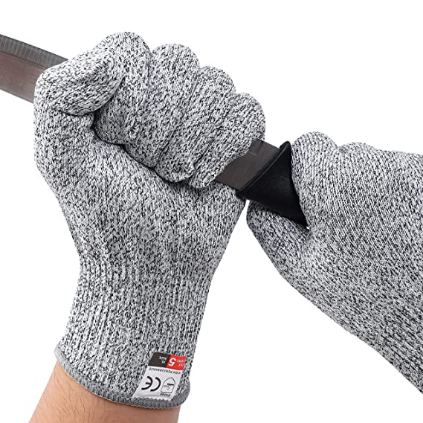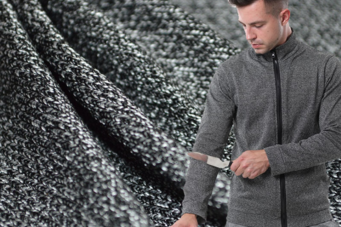Some information You Possibly Want to Know About Cut Resistant Gloves
Cut resistant gloves are a kind of gloves that will not be easily cut, having the advantages of cut-resistant, stab-resistant, non-slip, and wear-resistant. They are a high-strength protective hand protection product and are widely used in meat segmentation, glass processing, and metal processing, fire rescue, and other industries. Today, let's learn about it together!

What are the commonly used materials for cut-resistant gloves?
- Aramid (Kevlar): Aramid is an aromatic polyamide product. The fiber is yellow, strong, light, and flexible. It is 5 times stronger than steel of the same weight. It is flame-resistant and will not melt at high temperatures. Therefore, it is more suitable for high-temperature workers, such as metal smelting, industrial electric welding, glass processing, etc.
- High-strength polyethylene fiber (Dyneema): it is tough and lightweight, good fit, good wear resistance, low friction coefficient, high strength, more than ten times that of steel wire with the same cross-section. It is mostly used for workers in high-strength industries, such as metal processing, body assembly, stamping operations, etc.
- Steel wire and polyester fiber knitting: The steel wire glove has the highest cutting resistance and is suitable for manpower operation. In addition to being used in the food processing industry, it is also used to defend against animal bites.
What is the performance of cut-resistant gloves?
- Cut-proof, stab-proof, non-slip, and wear-resistant;
- It has super cut resistance, wear resistance and stab resistance;
- It can effectively protect human hands from being cut by sharp blades such as knives;
- Excellent anti-skid performance can protect objects from falling when grabbing.
Why cut-resistant gloves can protect us from damage?
From the appearance point of view, there is no difference between anti-cutting and ordinary cotton gloves. They are mainly composed of the wrist, palm, back of the hand, and fingers. After wearing anti-cutting gloves, they can be safe and effective from the wrist to the fingertips. Within the range of anti-cutting, it has the advantages of being easy to wear and take off, good air permeability, flexible finger bending, anti-static, easy to clean and so on.
The reason why anti-cut gloves can prevent knife cutting is mainly that there are three special materials inside, which are processed from special materials such as ultra-high molecular weight polyethylene fiber, stainless steel wire, and core-spun yarn.
Among them, ultra-high molecular weight polyethylene fiber has the characteristics of impact resistance and cutting resistance, and also has unique advantages in terms of chemical corrosion and wear resistance; the steel wire used is high-quality stainless steel wire, that is, the stainless steel material is added with chromium, manganese, nickel, etc. Rare metal elements make it meet the requirements of firmness, toughness, corrosion resistance, tensile and cutting resistance to the maximum, and then processed by a special process. It feels very soft when worn on the hand; Core-spun yarn: generally strong and synthetic filaments with better elasticity are core filaments, covered with short fibers such as cotton, wool, and viscose fibers, and then twisted and spun together. It has the comprehensive excellent properties of filament core yarns and covers short fibers.
How to clean and store cut-resistant gloves?
- Wash the gloves with soapy water (50 degrees Celsius) or hot water (50 degrees Celsius) mixed with detergent, at least once a day.
- Store the cleaned gloves in a cool, ventilated place.
- Do not clean the steel wire gloves by hitting hard objects.
- Avoid sharp objects contacting the surface of the glove as much as possible when using it.
In conclusion
The cut resistant gloves can protect us from damaging well, so it is widely used in many industries. However, when protecting our hands, we also pay attention to protecting our feet. In every workshop, a pair of rubber overshoes are needed. If you have more questions, just feel free to fale conosco.


.png?imageView2/1/w/341/h/227)






.png?imageView2/1/w/341/h/227)